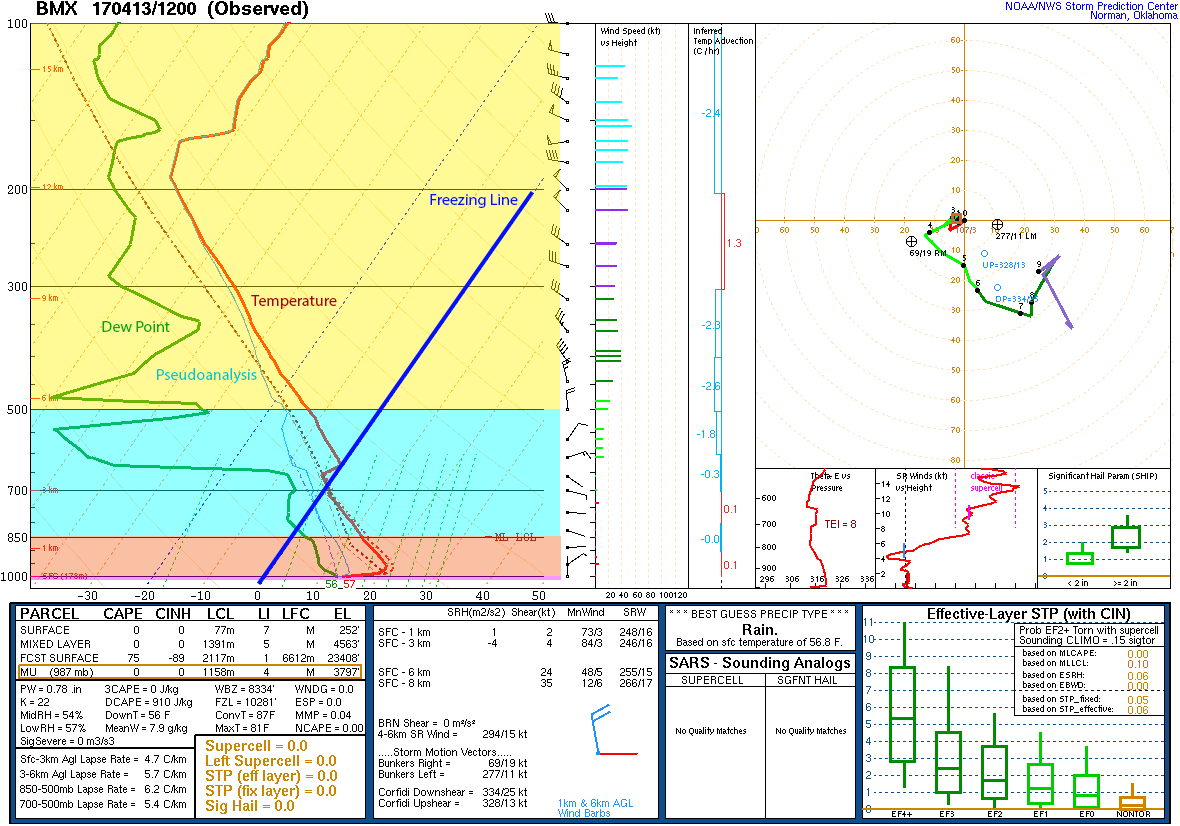Sounding
A sounding,or Skew-T is information for the vertical atmospheric conditions at a point in time. Soundings start at the surface and go up several miles into the atmosphere.
Reading a Sounding
Below is an example of a sounding. The magenta layer at the bottom represents the surface layer. This varies based on location, and can be higher or lower than what is presented. The peach color is the lower and mid-levels. These are the levels in which during winter matter the most, since they often dictate what precipitation falls. This includes the 925mb layer through the 850mb layer. Above that is the upper levels, and above the upper levels is the extreme upper levels layer.
Temperature
The temperature isotherms can be read through the red line and the degrees in C at the bottom of the chart. The isotherms are angled, so be sure to follow the temperature at the angle instead of vertically. An example of telling precipitation type is if the temperature line is completely to the left of the blue line, then the precipitation will be snow. If it is to the right of the line below 850mb, then it will be rain.
Dew point
The dew point can help to show whether hail will form, evaporative cooling will happen, or if the atmosphere is completely saturated. If the dew point in the upper levels is low during a severe weather event, this helps to create an environment for producing hail, given that the mid levels and lower levels are saturated or humid. If they are low in the mid or lower levels, but high in the upper levels, and precipitation forms, the precipitation will evaporate and cool the levels below it. This is known as evaporative cooling.
Pseudoanalysis (Wet Bulb)
The pseudoanalysis, sometimes shown as wetbulb shows what the temperature would be if the air was 100% saturated at the given time. At this point, the humidity is at 100%, and the temperature cannot drop anymore due to evaporative cooling.
Lower Chart
Often, soundings are accompanied by more information than just the vertical information. In the case of the above chart, there is a section for atmospheric energy (CAPE) and energy inhibitors (CINH), a section for shear and wind direction and speed at different levels, SARS analogs, guessed precipitation, and effective layer STP.
